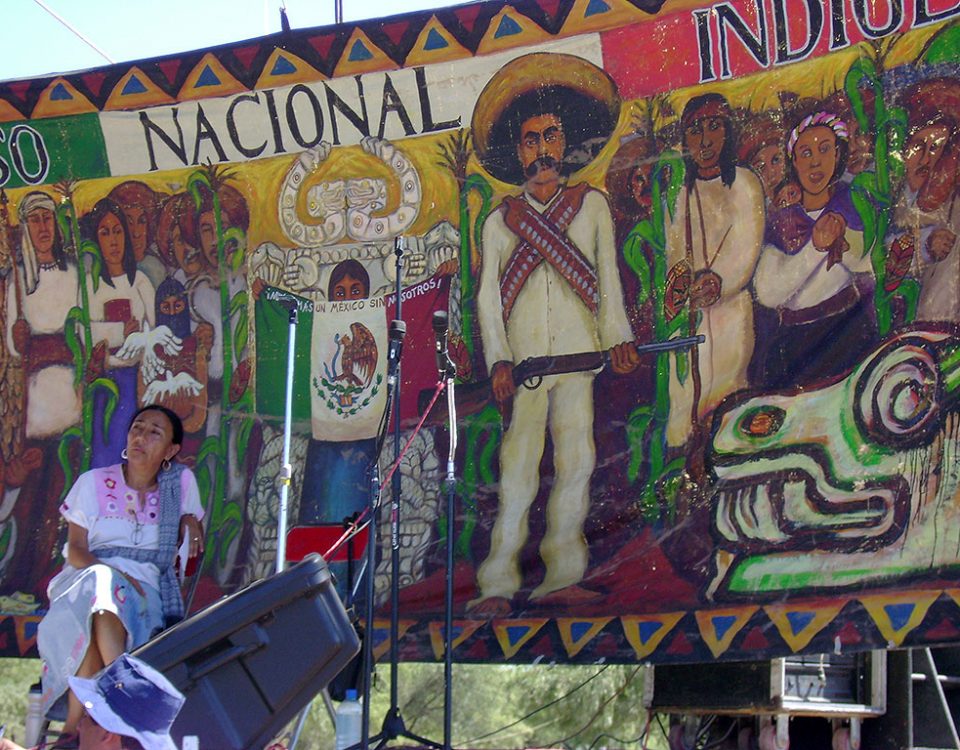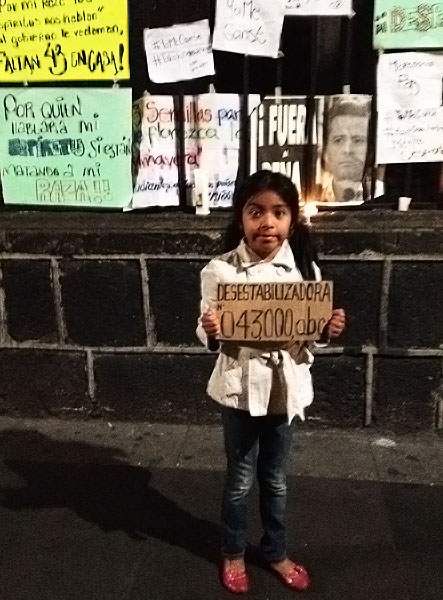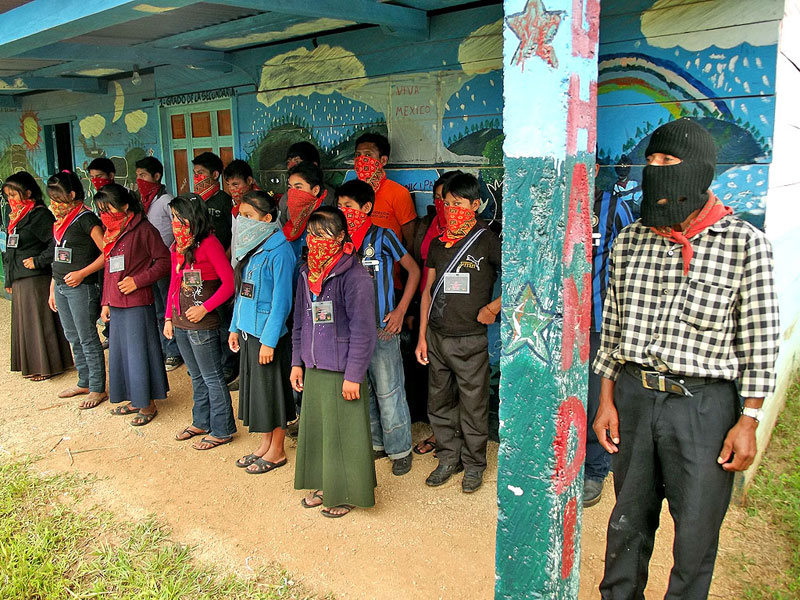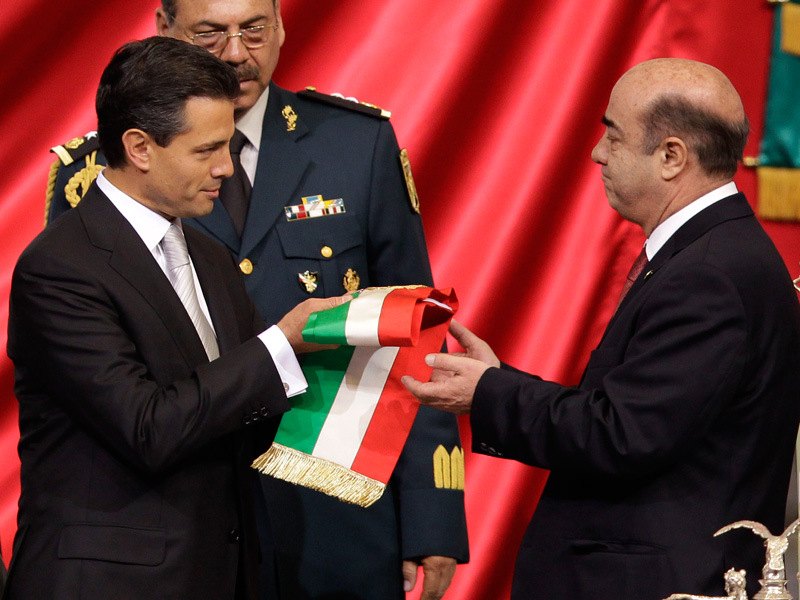2005
30/12/2005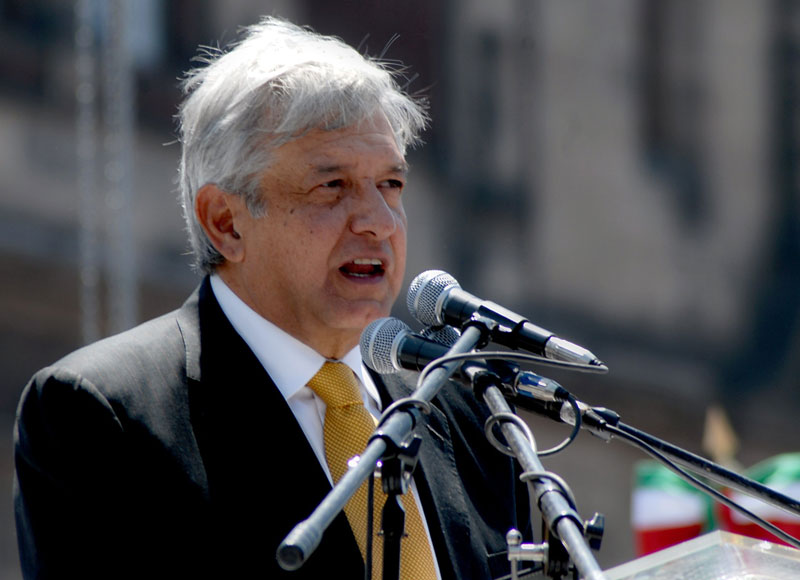
UPDATE: Mexico, The Start of Campaigns – Ready, Set, Go!
31/01/2006In January, during his visit to Chiapas, President Vicente Fox claimed that the EZLN is an issue that “now essentially remains in the past and everyone is looking forward.” The words of President Fox prove that the EZLN is not the biggest problem for the current government, which is more preoccupied with the premature struggle for the 2006 presidential elections, the growing power of drug trafficking, and by legislative bills still pending, all of which take greater priority for his administration.
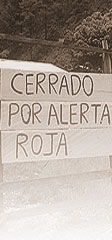 On the eve of January 1, the date that the new municipal authorities took power, demonstrations were held, highways were blocked, and confrontations took place in various municipalities (Oxchuc, Tila and Sabanilla, for example). In Tila (the Northern Zone), both the PRI and the Alianza PRD-PT announced victory. The highest court, the Electoral Tribunal of Judicial Power of the Federation (TEPJF) finally declared the PRI victorious. On February 15th, there was a violent eviction, by a group of more than 800 police officers, of the sit-in in front of the municipal palace. 54 people were arrested. The parish priest of Tila noted that tension in the region had resurfaced due to the post-election conflicts and to the revival of the paramilitary group ‘Paz y Justicia’ (Peace and Justice).
On the eve of January 1, the date that the new municipal authorities took power, demonstrations were held, highways were blocked, and confrontations took place in various municipalities (Oxchuc, Tila and Sabanilla, for example). In Tila (the Northern Zone), both the PRI and the Alianza PRD-PT announced victory. The highest court, the Electoral Tribunal of Judicial Power of the Federation (TEPJF) finally declared the PRI victorious. On February 15th, there was a violent eviction, by a group of more than 800 police officers, of the sit-in in front of the municipal palace. 54 people were arrested. The parish priest of Tila noted that tension in the region had resurfaced due to the post-election conflicts and to the revival of the paramilitary group ‘Paz y Justicia’ (Peace and Justice).
In February the Fray Bartolomé de Las Casas Human Rights Center made public a complaint about human rights violations in the Northern Region of Chiapas, which had been previously submitted to the Comisión Interamericana de Derechos Humanos (Interamerican Human Rights Commission) in October 2004. They denounced the persistent impunity, which contributes to the development of new conflicts: the paramilitary structures have not been disarmed nor dismantled, those responsible, intellectually or physically, have not been penalized, and there have been no reparations for the victims. In the days that preceded the forceful removal of the sit-in in Tila, the Fray Bartolomé Human Rights Center stated that the detention of Samuel Sánchez Sánchez, founder and leader of “Paz y Justicia”, was “overdue and inadequate.”
At the national level, on April 7th, the Chamber of Deputies decided to retract the immunity of the head of the government of the Federal District of Mexico, Andrés Manuel López Obrador, and remove him from his political post, so that he could be subjected to a legal process for his supposed contempt. This was perceived to be a political action to exclude López Obrador, the leader of the PRD and the favorite in the polls, from the upcoming presidential elections. It also brought into question were the roles of Vicente Fox, his party, the PAN, and the PRI in this process. At the end of April, amidst massive pressure from the civil society, the campaign against AMLO was dropped.
On June 20, the EZLN declared a Red Alert, which included the closing of the autonomous civil structures (Caracoles) and the retreat of the Zapatista insurgents. At the same time, they declared the breakdown of relations between the Zapatista civil structure and the institutions of the Chiapas state government.
Just before the Red Alert, unusual regroupings of some military and police bases occurred in Chiapas, an event without precedent since 2001. On the same day as the announcement of the Red Alert, the SEDENA stated that they had carried out an operation in which they found and destroyed 44 marijuana plants in Zapatista territory. It soon surfaced that the operation had taken place outside of the so-called “conflict zone,” in municipalities that have no Zapatista presence. As a result, the Ministry of the Interior had to deny the connection they claimed to the Zapatistas.
A number of communiqués followed the announcement of the Red Alert (which was lifted on July 11):
- Announcing the reorganization of the internal political and military structure of the EZLN;
- Explaining that the Red Alert was only a “preventative measure” to protect the internal consultation (referring to the military offensive that attempted to detain the Zapatista commanders during a previous consultation in February 2005);
- Informing that through the consultation the community assemblies of the EZLN had decided to launch “a new national and international political initiative” which would be explained in the Sixth Declaration of the Selva Lacandona (“La Sexta”).
The “Sexta” proposes the creation of a “new front” which will be promoted through a national tour seeking to forge alliances with political, social, indigenous, worker, campesino, student and popular groups. The idea is to create “a national plan of action, that is clearly leftist, which is to say, anticapitalist” and to move towards the creation of a new Constitution. It also proposes the organization of an intergalactic meeting, like the one held in La Realidad in 1996.
While the main parties were holding their internal elections to decide their presidential candidates, the EZLN launched the “Other Campaign.” They severed all ties to these political parties. After what the EZLN refers to as the legislative “betrayal” in 2001, when Congress approved a Constitutional reform on indigenous rights and culture that dramatically differed from the agreement reached in the San Andres Accords, the EZLN believes that there is nothing to debate with those from “above,” the institutions and the political parties. According to the EZLN, the position to vote for the “lesser of the evils” is not an option. Nevertheless, the Sexta is not a call for abstentionism.
Amidst the crisis in representative democracy and the rupture with the institutions, the Zapatistas proposes something more than a strategy, a methodology based on listening, constructed from the roots, for the roots: the Other Campaign. A series of meetings were organized, in August and September in Chiapas, between the EZLN and the civil society to prepare for the national tour of the Other Campaign. In the first plenary session, 2,069 people arrived at the Caracol of La Garrucha.

